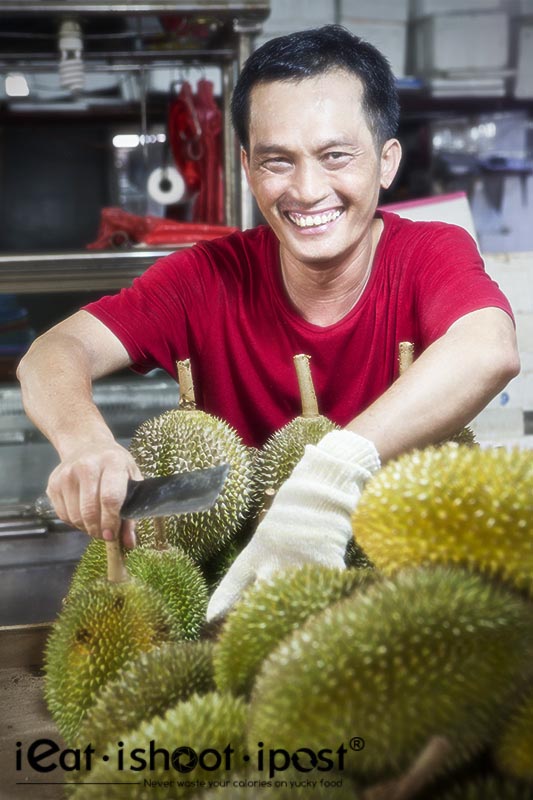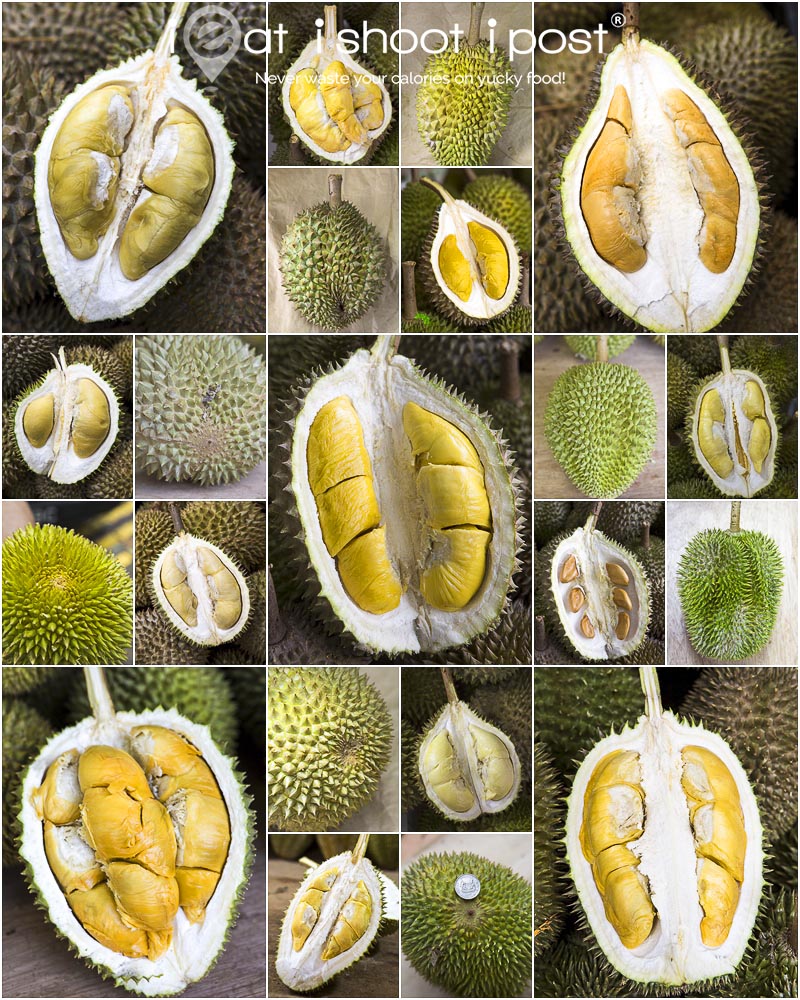
I don’t remember eating Mao Shan Wang when I was growing up in the 70’s. Back in those days, I only really remember people speaking of Segamat Durians. Nowadays, Durians come in all sorts of D numbers and fancy names. Branded Durians like Mao Shan Wang, D24 and Ang Hei have great commercial value and are grown in many plantations in Malaysia and you can find them almost anywhere in Singapore.
However, Durian connoisseurs like my friend Tommy prefer to take the road less travelled. After all, you can’t call yourself a connoisseur if you only know about Mao Shan Wang, Golden Phoenix and Ang Hei. Heck, even my son knows about those. No, the REAL Durian connoisseur would seek after the less well known cultivars for their more subtle nuances in flavour and aroma. These lesser known brands are not POP culture Durians that appeal to the masses but have more complex characteristics that appeal only to the more discerning.
One such Durian that Tommy was telling me about is the Gang Hai which he remembers eating when he was a kid. Gang Hai was a famous Segamat Durian in the past before the branded durians like D24, XO and Mao Shan Wang became popular. I guess you can think of them as the Space Invaders, Bee Gees and Six Million Dollar Man of the Durian world.

To get the ultimate Gang Hai experience, I met up with Tommy at Ah Kok’s stall in Pasir Ris. Ah Kok grew up in Segamat and now sells fruits at Pasir Ris. How the two are connected, I do not know.
However, come June and July, he becomes the Durian Hero when he gets his delivery of Gang Hai江海 durians from Segamat and queues form at his stall early in the morning as Gang Hai fans make their annual pilgrimage to partake of their favourite fruit.
What makes his Gang Hai special is that they are actually from the original plantation in Segamat and have not been grafted. ie the trees were grown naturally from seed. Ah Kok tells me that there are only four plantations left in Segamat which are still producing these Durians and they are all very old trees, so the quality is very good. Another reason that this Durian has achieved cult status is that the season is very short. It lasts only three weeks in June and three weeks in July. By the time this post is online, it would be well into the July season already so you don’t have much time to try it.

At $8/kg, my initial impression was that it was a little expensive compared to the branded ones like D13 or Ang Hei which are more fleshy. So why do people flock to buy these Durians?
Well, people who like Gang Hai don’t actually go for thick flesh, creamy and sweet Durians. The flesh of the Gang Hai is more dry and pastey and it is fibrous so you have to chew it a bit. Tommy tells me that unlike Mao Shan Wang which doesn’t have fibre, the pleasure of eating Gang Hai is derived from chewing the fibres and enjoying the slow release of the flavours. The flesh also tends to coat the mouth because of its stickiness, which is something the connoisseur goes for.
The seeds of the Gang Hai are always shrunken and characteristically bell shaped, so you do get a good amount of flesh. They are also known as “Pop Corn” Durians because they are dry and relatively small sized, so you can pop them into your mouth like Pop Corn and your fingers will remain clean. This is quite a good Durian to introduce to someone who is new to Durian or happen to be averse to the smell as it is not very pungent.

Ah Kok also had some Tai Yuan (太元) durians available that day which I sampled. The Tai Yuan is more readily available than the Gang Hai and has its own fanbase. The shape of the Tai Yuan is rather characteristic as it is elongated and shaped like a rugby ball.

I was told that Tai Yuan has a very unique taste which would appeal to some connoiseurs. The flesh is a greyish yellow in colour and is often quite bitter. I actually quite like its watery, bitter taste and it reminds me of the Kampung durians I ate as a kid. According to Ah Kok, he brings in Tai Yuan which are also from old trees which have not been cloned.

Tommy has been buying Durians from Ah Kok for quite some time and vouches for his honesty. Just note that he has a crazy “Thyroid” stare when he doesn’t smile so he might look a little scary the first time you meet him. I had to get him to smile several times for the camera so that he looks more approachable.
Conclusion
One of the few places where you can get the Gang Hai Durian from Segamat. Ah Kok also brings in good quality Mao Shan Wang from Bentong in Pahang. Note that the best time for Gang Hai is early in the morning while the Mao Shan Wang usually arrive in the afternoons.
Acknowledgement
Thanks to Tommy Lim for his invaluable input on Durians!












Correction to your article…Kang Hai is the correct spelling & durian plantation is from Muar not Segamat.
Thanks Rachel. May I know how I can confirm this information?